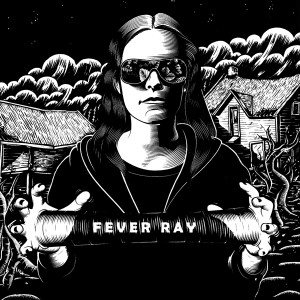album review: fever ray, fever ray

Alternatively: From the Vault: Christine Campbell’s Random Favorite Albums Ever
Fever Ray is the 2009 solo brainchild of Karin Dreijer Andersson, one half of Swedish electronic duo The Knife.
I first heard of The Knife back in 2006, when their song “We Share Our Mother’s Health” was featured in an iTunes free download of the week in part to promote their 2006 album Silent Shout. I like electronic music as much as the next person, but I didn’t think The Knife was offering anything too special with this track beyond Andersson’s strangely captivating voice. Despite my malaise, Pitchfork gave the album the highest possible honors it could receive, naming it the best album of 2006.
There is no particular reason why I decided to review Fever Ray for this week. It’s been in my heavy rotation for months, since I saw it on someone’s most influential albums of the 2000s list back when that was a fad, but there’s not any kind of major correspondence to this week in May and me choosing to review Fever Ray. It’s an album that has become pretty important to me over the past two months especially, and I want to share with you lovely readers why Fever Ray deserves your attention.
The album could easily be listed under either genre, but unlike typical electronic or trip-hop, Fever Ray uses minimalist arrangements in spatial soundscapes wherein Andersson’s vocals play against each other to create an eerie, catchy, unmistakably unique sound. The beats driving each song on the album work almost in reverse: there is not the danceable, traceable build-up and cascading crescendo that most typical electronic songs feature; instead Fever Ray operates somewhere much deeper and darker. The seemingly sparse production and arrangements on songs like “When I Grow Up”, “Now’s the Only Time I Know” and “Keep the Streets Empty for Me” are what most strongly defines Fever Ray’s individuality.
The distorted vocals on “Dry and Dusty”, “Concrete Walls” and “Coconut” take the album in a totally different direction. The way Andersson layers her standard voice over its distorted counterpart gives these songs the feeling of androgynous duets – I was totally convinced Fever Ray had more than one member until I looked it up. This vocal styling, combined with the sparse yet complex beat production, is what makes Fever Ray so “weird.” The offbeat quality is what turns you onto the sound, and Andersson’s talent keeps you coming back for more.
Never failing to include what makes me love good electronic music, though, Fever Ray strays as easily into the world of dance floor anthems as it veers away. Back-to-back tracks “Seven” and “Triangle Walks” are the most commercial singles on the album. In these songs, you can hear the masterful hand of the producers and the artist who enjoyed considerable success in the dance music genre.
My personal favorite track on Fever Ray is “I’m Not Done” for all the reasons I think the band is so great: unexpected instrumental progression, strange danceability, hazy layered vocals, a back beat that sticks in your head and the astonishingly successful operation between the worlds of too weird and perfectly avant-garde.
Open your mind and check Fever Ray out. I promise you can’t possibly regret it.

